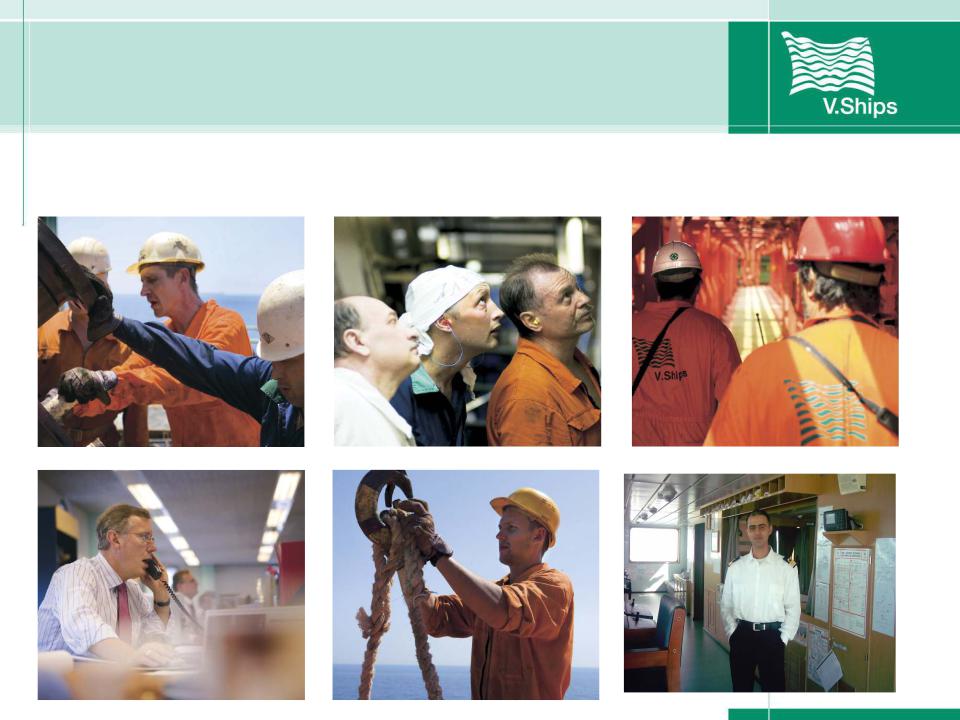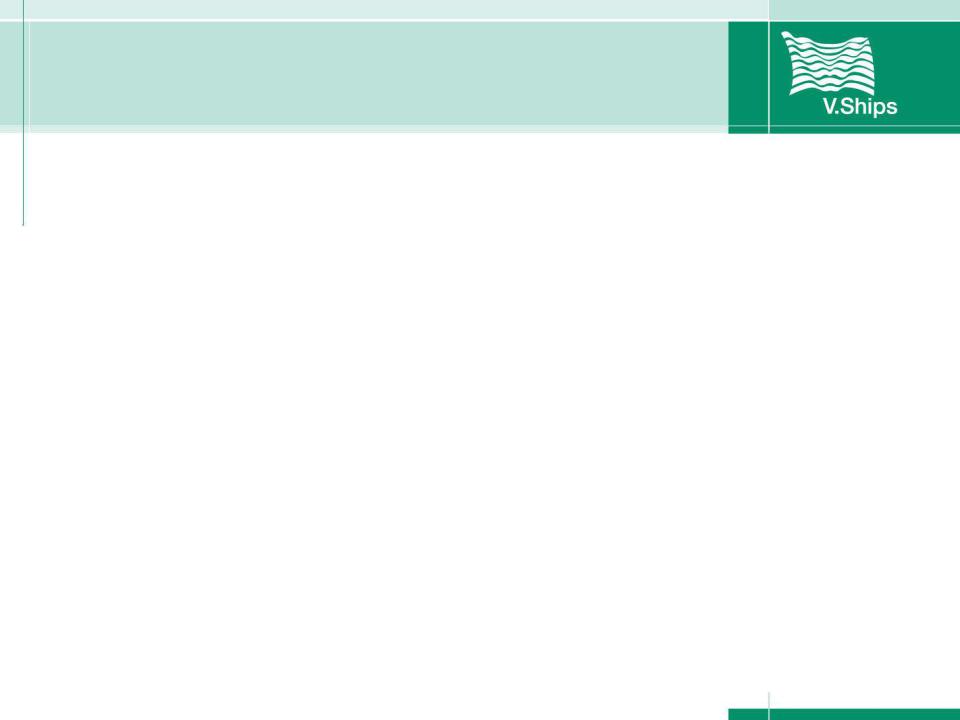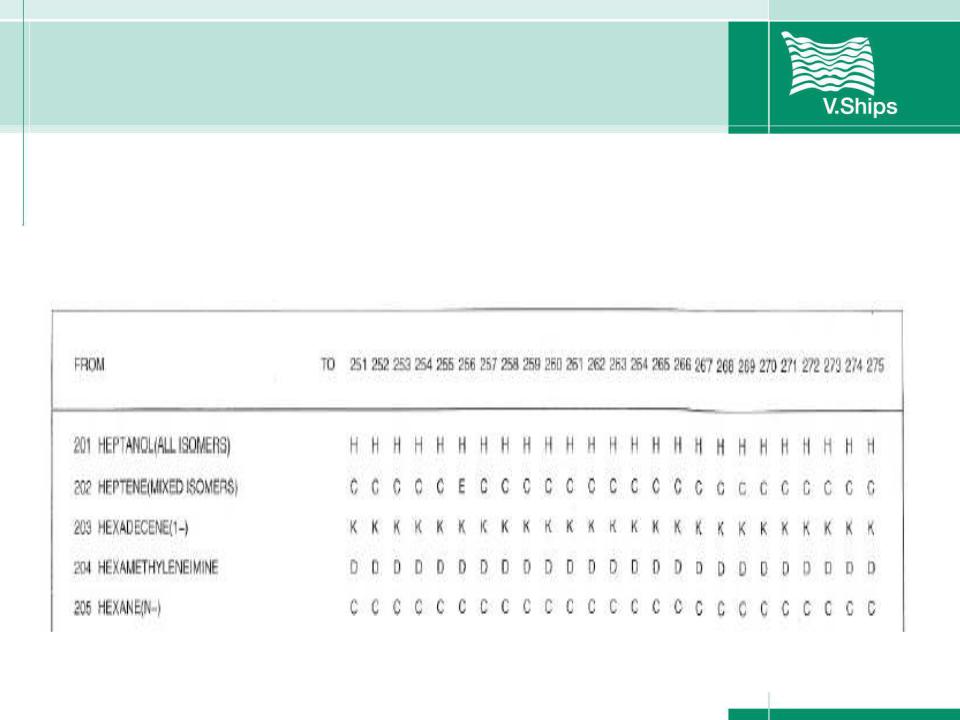
Chemical Tankers / Day 3 / Day 3 Topic 5 Tank Cleaning Guidelines
.pdf
Chemical Training

Cleaning Guidelines and recommendations for different cargoes.

5.1 Existing guidelines
The following publications are most commonly used in industry and may be helpful source for tank cleaning information:
MIRACLE Tank Cleaning GMBH;
Dr Verwey’s Tank Cleaning Guide;

5.1 Existing guidelines
Dr Verwey’s Tank Cleaning Guide is issued by “Dr. A. Verwey’s Chemical Laboratory”, Rotterdam.

5.1 Existing guidelines
Dr Verwey’s Tank Cleaning Guide - The chart
The products have been listed on the left side of the cleaning chart and numbered. The products numbered have also been listed across the top of the cleaning chart for cross reference.
When cleaning from one product to another the cleaning chart should be used as follows:

5.1 Existing guidelines
Dr Verwey’s Tank Cleaning GuideThe chart
The product from which the tank has to be cleaned is found in the outer left hand column.
The number of the product to be removed can also be found in this column. For example, cleaning from Hexane-N to Methyl Alcohol.

5.1 Existing guidelines
Dr Verwey’s Tank Cleaning Guide – The chart
Product cleaned from: Hexane-N. Corresponding number is 205.
Product to be cleaned for: Methyl Alcohol Corresponding number is 256.

5.1 Existing guidelines
Dr Verwey’s Tank Cleaning Guide
The numbers are noted down and next the code of the relevant cleaning procedures can be found in the main book at the intersection of the horizontal line against the product to be removed, and the vertical line under the number of the product to be cleaned for.

5.1 Existing guidelines
Dr Verwey’s Tank Cleaning Guide
Hexane-N under number 205. Code relevant to cleaning procedures Is found at the intersection of the horizontal: 205 & 256 – code c

5.1 Existing guidelines
Dr Verwey’s Tank Cleaning Guide
The exact details for letter code ‘c’ cleaning procedures can be found in Table 2.
